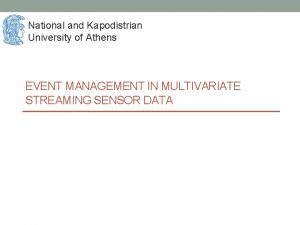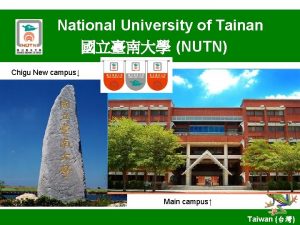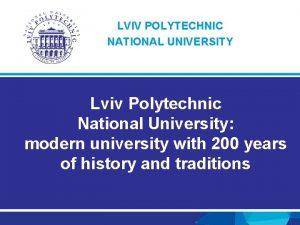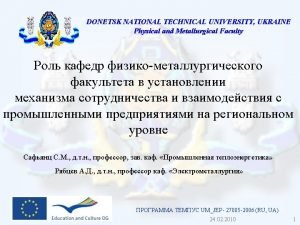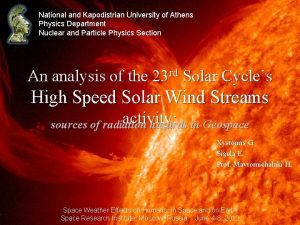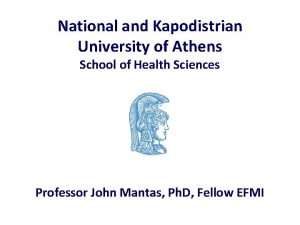ATHENS TEST SITE National Kapodistrian University of Athens









- Slides: 9

ATHENS TEST SITE National & Kapodistrian University of Athens Seismological Laboratory 2 nd year SAFER Project meeting, Istanbul, Turkey, 25 -27 June, 2008

A prototype hybrid seismological network designed aiming the comparison and if possible joint use in the future of single station (on-site) and network based early warning algorithms on an evolutionary way. All appropriate infrastructure upgrades (seismological stations and computing equipment) have been purchased and installed since early September 2007. Sites with real time data transmission to the central site at NKUA are coupled with off line seismographs and dial-up accelerographs in order to provide a dense network in the covered area. All equipment is 24 bits recorders, seismographs are recording in continuous mode, accelerographs at trigger mode. On site approach is under investigation. In close collaboration with NIED network based approach is implemented in off line mode at this moment. Software developments are in process towards its implementation the real-time transmission system. Fig. 2 Green: Seismographs in real-time transmission, Red: Seismographs in offline mode, Yellow: Accelerographs in dial-up mode.


Network approach example Picking and associating phases

Within the framework of Activity 3 NKUA has been working on servicing the stations and sites in order to re-initialize TRISAR seismic array operation.

TRISAR Response Improvement New geometry and station locations of the array in order to optimize its performance for the Gulf of Corinth test site have been defined, and the array was in operation from 19 th June 2007 including 3 additional stations to a total of seven 3 -component stations(figure 2). Due to several hardware problems encountered during the first period of operation a limited amount of data was initially available, after servicing and updating station equipment a significant amount of data is currently available from this array including recordings from events located within the test site area.

The second array was installed on January 23 rd, 2008 in the area of Malesina to the north of Athens comprising of 5 3 -component broadband stations. Operation of this second array is still continuing, without any major hardware failures, while real time data transmition is presently implemented.

In the framework of the array related tasks included in WP 2 test data sets were provided to NORSAR in order to test the software being developed, initially from the TRISAR array and then from both arrays. Following communications with Dr. Johannes Schweitzer it was decided that the software will be initially installed remotely and the installation will be finalized during a visit to NKUA in mid-June. NKUA will continue the operation of the arrays and processing of the data.

28 -01 -2008 Gulf of Corinth
 National and kapodistrian university of athens events
National and kapodistrian university of athens events Kapodistrian meaning
Kapodistrian meaning Hot site cold site warm site disaster recovery
Hot site cold site warm site disaster recovery National unification and the national state
National unification and the national state Chernivtsi university ukraine
Chernivtsi university ukraine Kyiv national university of culture and arts
Kyiv national university of culture and arts National university of tainan
National university of tainan Lviv polytechnic university
Lviv polytechnic university Donetsk technical university
Donetsk technical university Bila tserkva university
Bila tserkva university
